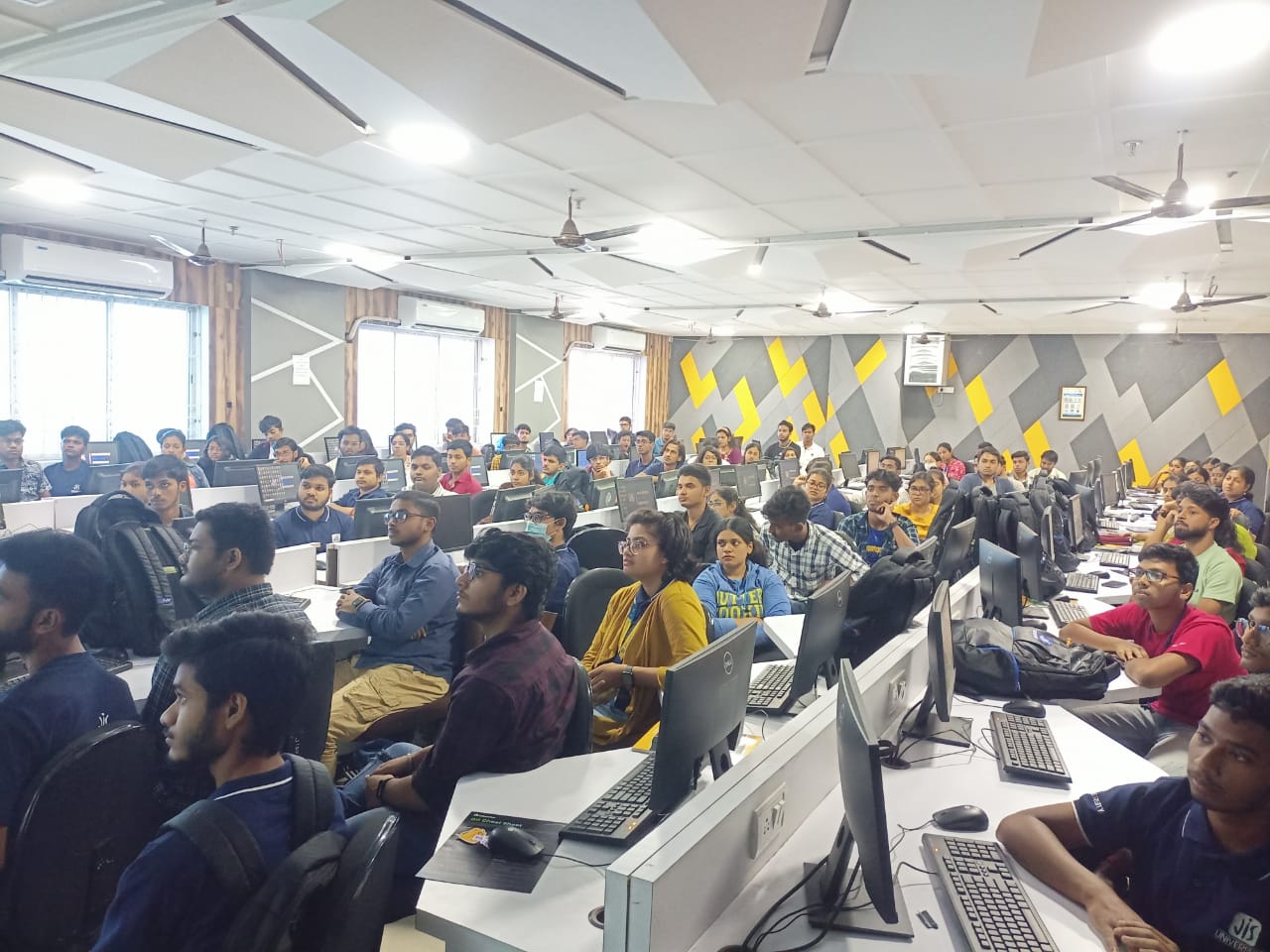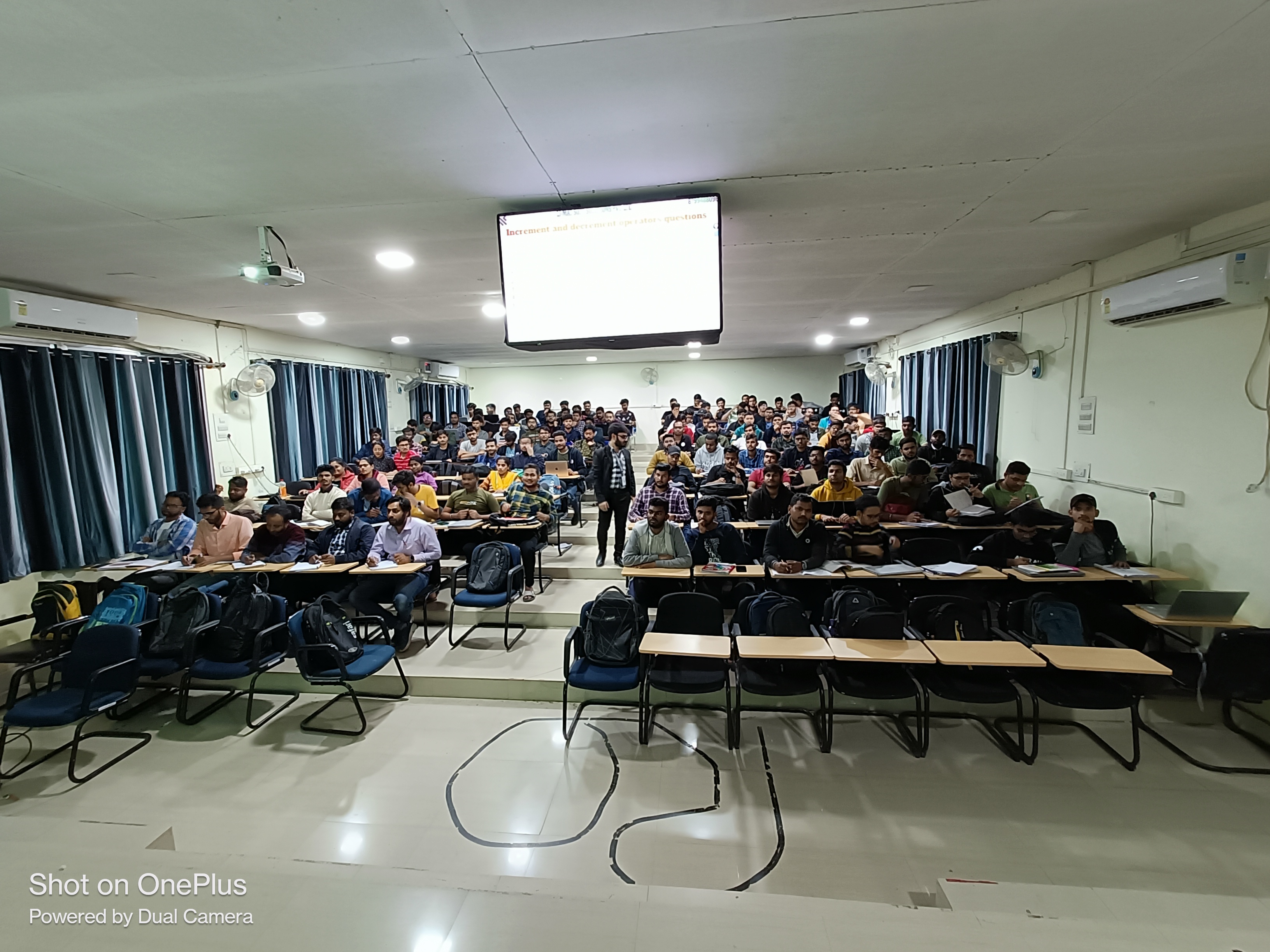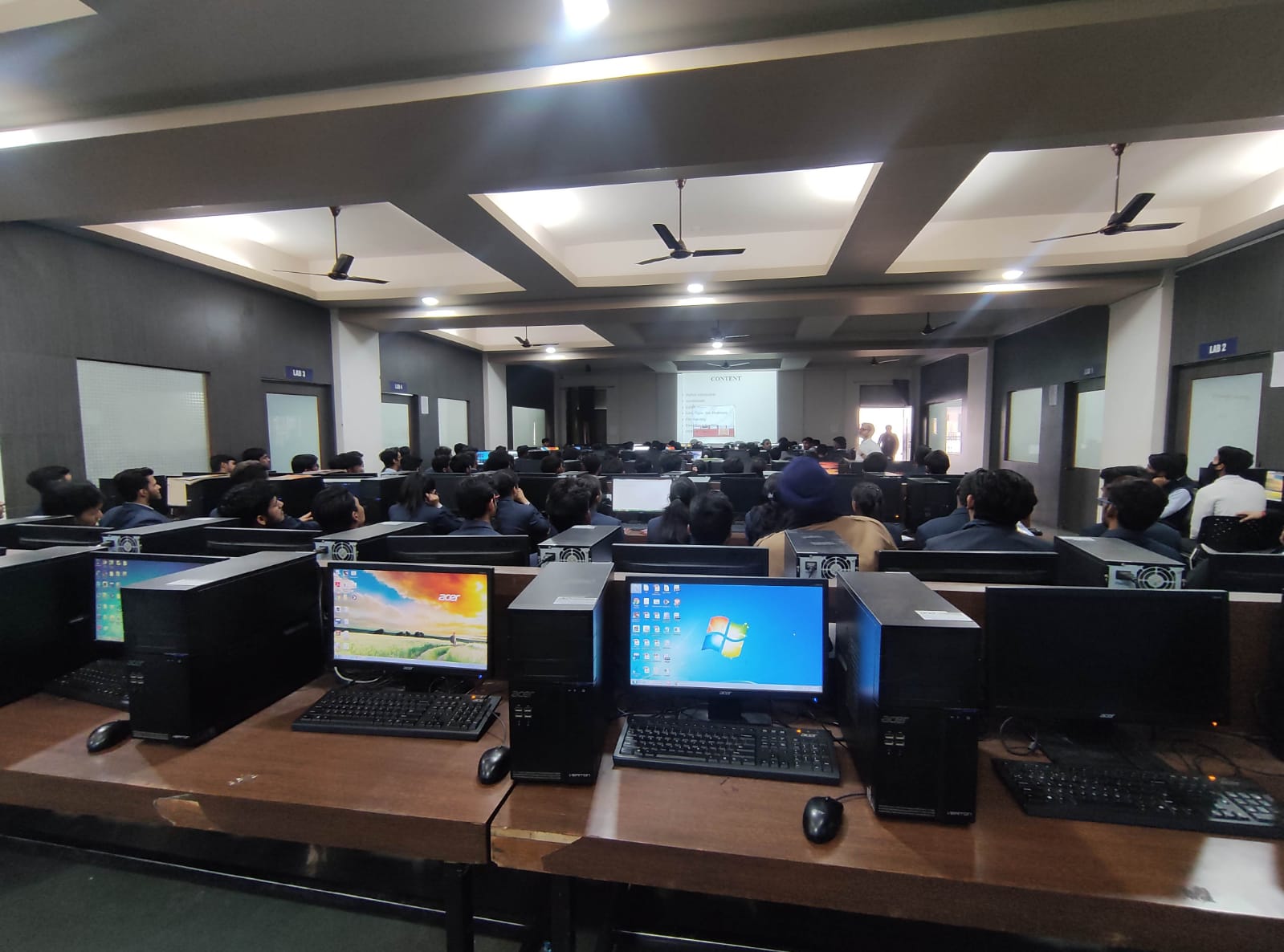In an age where technology is omnipresent, the need to protect our digital information has never been more critical. Cyber security has emerged as a cornerstone of modern society, ensuring that sensitive data remains safe from malicious threats. As cybercrime continues to rise, the demand for skilled cybersecurity professionals has surged, offering lucrative and rewarding career opportunities. Whether you're a tech enthusiast, a student, or a seasoned professional, online cyber security training provides a flexible and effective way to enter or advance in this dynamic field. In this article, we'll explore cyber security, the exciting career opportunities it offers, and why you should consider learning from Li-Mat Soft Solutions.
What is a Cyber Security Course?
Cyber security, at its core, involves the practice of protecting systems, networks, and data from digital attacks. These attacks, often referred to as cyber threats can range from hacking and data breaches to ransomware and phishing scams. The goal of cyber security is to ensure the confidentiality, integrity, and availability of information by implementing robust security measures.
In a world where businesses, governments, and individuals increasingly rely on digital platforms, cyber security plays a vital role in safeguarding critical assets. Whether it's personal information, financial data, or intellectual property, the consequences of a security breach can be devastating. As such, cyber security professionals are tasked with identifying vulnerabilities, implementing protective measures, and responding to incidents to mitigate potential damage.
Career Opportunities After Cyber Security Training:
The field of cyber security offers a wide range of career opportunities, catering to various skill sets and interests. As organizations continue to prioritize the security of their digital assets, the demand for cybersecurity professionals is only expected to grow. Here are some of the key career paths within cyber security:
- Cyber Security Analyst:
Cybersecurity analysts are responsible for monitoring an organization's networks and systems for security breaches. They use a variety of tools and techniques to identify vulnerabilities and respond to threats in real time. Analysts play a crucial role in maintaining the security of an organization's digital infrastructure.
- Penetration Tester (Ethical Hacker):
Penetration testers, also known as ethical hackers, are tasked with simulating cyber attacks on an organization's systems to identify weaknesses. By proactively finding and fixing vulnerabilities, penetration testers help organizations stay ahead of malicious hackers.
- Security Architect:
Security architects design and implement the security infrastructure for an organization. They develop security policies, procedures, and technical solutions to protect an organization's data and systems. Security architects often work closely with other IT professionals to ensure that security measures are integrated into all aspects of the organization's operations.
- Incident Responder:
Incident responders are responsible for managing and mitigating cyber security incidents. When a breach occurs, incident responders quickly assess the situation, contain the threat, and work to restore normal operations. Their ability to respond swiftly and effectively is critical in minimizing the impact of cyber attacks.
- Chief Information Security Officer (CISO):
The CISO is a senior executive responsible for overseeing an organization's cybersecurity strategy. CISOs work with other executives to ensure that the organization's security policies align with its business goals. They are also responsible for managing the cyber security team and ensuring that the organization complies with relevant regulations.
- Security Consultant:
Security consultants provide expert advice to organizations on how to protect their digital assets. They often work on a project basis, conducting risk assessments, designing security solutions, and helping organizations implement best practices. Security consultants may also provide training to staff on cyber security awareness.
These are just a few examples of the many career paths available in cyber security. Each role offers unique challenges and rewards, making it an exciting field for those with a passion for technology and problem-solving.
Why Choose Li-Mat Soft Solutions for Cyber Security Training?
Choosing the right provider for cyber security training is crucial to building a successful career in this fast-growing field. Li-Mat Soft Solutions has established itself as a leader in cybersecurity education, offering an extensive range of courses tailored to meet the needs of learners at all stages. Here’s why Li-Mat Soft Solutions should be your top choice:
• Expert-Led Instruction: Our courses are conducted by highly experienced cybersecurity professionals who bring real-world expertise into the classroom. This ensures that the knowledge you gain is practical, current, and directly applicable to your career.
• Robust Curriculum: Li-Mat Soft Solutions provides a comprehensive curriculum that covers everything from foundational cyber security principles to advanced, niche areas of specialization. No matter where you are in your learning journey, you’ll find a course that suits your goals.
• Flexible Learning Models: We understand that everyone has different learning preferences and schedules. That’s why we offer both online and offline training options, allowing you to choose the format that best fits your lifestyle and commitments.
• Interactive Hands-On Labs: Cybersecurity is a field where practical skills are key. Our training programs include hands-on labs and real-world simulations, enabling you to apply your knowledge in realistic scenarios and develop the skills that employers value.
• Industry-Recognized Certifications: Li-Mat Soft Solutions prepares you for a range of industry-recognized certifications, including CompTIA Security+, CISSP, and CEH. These credentials are highly sought after by employers and can significantly boost your career prospects.
• Comprehensive Career Support: Beyond just training, we are committed to helping you succeed in your career. Our career support services include resume building, interview coaching, and job placement assistance to ensure you have the tools and confidence to thrive in the job market.
Course Curriculum Overview: Online Cyber Security Training:
Understanding the intricacies of cyber security is vital in today's digital world, where threats to personal and organizational data are ever-present. This comprehensive online cyber security certification curriculum is designed to equip students with the knowledge and skills needed to safeguard systems, networks, and data. The curriculum is structured into modules, each focusing on key areas of cyber security, from foundational concepts to advanced techniques. Here's an in-depth look at what you will learn in the upcoming months:
Module 1: Introduction to Ethical Hacking
This module serves as an entry point into the world of cyber security. It covers the fundamental principles of ethical hacking, providing an overview of information security and the threats that organizations face. You will learn about hacking concepts, ethical hacking methodologies, and the legal standards that guide ethical hacking practices. Additionally, this module introduces penetration testing, an essential skill for identifying and mitigating security vulnerabilities.
Key Topics:
- Information Security Overview
- Information Security Threats and Attack Vectors
- Hacking and Ethical Hacking Concepts
- Information Security Controls
- Penetration Testing Concepts
- Information Security Laws and Standards
Module 2: Footprinting & Reconnaissance
Footprinting and reconnaissance are critical steps in the hacking process, allowing hackers to gather information about their targets. This module explores various footprinting techniques and tools, teaching students how to collect data from search engines, social networking sites, and web services. You'll also learn about countermeasures and how to protect your systems from footprinting attacks.
Key Topics:
- Footprinting Concepts
- Website and Email Footprinting
- Social Networking Site Footprinting
- Competitive Intelligence and Whois Footprinting
- Network and DNS Footprinting
- Footprinting Tools and Countermeasures
Module 3: Scanning Networks
Building on the information gathered during footprinting, this module delves into network scanning techniques. You will learn how to identify live systems, open ports, and running services on a network. The module also covers various scanning tools and techniques, including banner grabbing and network diagramming, essential for understanding network vulnerabilities.
Key Topics:
- Network Scanning Concepts
- Scanning Tools and Techniques
- Scanning Beyond IDS and Firewalls
- Banner Grabbing and Network Diagrams
- Scanning Pen Testing
Module 4: Enumeration
Enumeration involves extracting detailed information about network resources, such as user accounts and system names. This module covers different enumeration techniques and tools, with a focus on identifying vulnerabilities that can be exploited. You'll also learn how to defend against enumeration attacks and conduct enumeration penetration testing.
Key Topics:
- Enumeration Concepts
- NetBIOS, SANP, and LDAP Enumeration
- SMTP and DNS Enumeration
- Enumeration Countermeasures
- Enumeration Pen Testing
Module 5: Vulnerability Analysis
Understanding and assessing vulnerabilities is a crucial aspect of cyber security. This module teaches students how to conduct vulnerability assessments using various tools and techniques. You'll learn how to interpret vulnerability reports and implement appropriate security measures to mitigate identified risks.
Key Topics:
- Vulnerability Assessment Concepts
- Vulnerability Scoring Systems
- Vulnerability Assessment Tools
- Vulnerability Assessment Reports
Module 6: System Hacking
System hacking is one of the core modules in this curriculum. It focuses on the techniques used to gain unauthorized access to systems. You will learn how to crack passwords, escalate privileges, and execute applications covertly. The module also covers methods for hiding tracks and penetration testing to evaluate system security.
Key Topics:
- System Hacking Concepts
- Password Cracking Techniques
- Privilege Escalation
- Application Execution
- File Hiding and Covering Tracks
- System Pen Testing
Module 7: Malware Threats
Malware poses a significant threat to cyber security. This module provides an in-depth understanding of different types of malware, including viruses, worms, and trojans. Students will learn how to detect and mitigate malware attacks, using tools and techniques to protect systems from these threats.
Key Topics:
- Malware Concepts
- Trojan, Virus, and Worm Concepts
- Malware Detection and Countermeasures
Module 8: Sniffing
Sniffing involves intercepting data as it travels across a network. In this module, you'll explore various sniffing techniques, such as MAC attacks, DHCP attacks, and ARP poisoning. The course will also teach you how to detect sniffing attacks and implement countermeasures to secure your network.
Key Topics:
- Sniffing Concepts and Techniques
- MAC, DHCP, and ARP Poisoning Attacks
- Spoofing and DNS Poisoning
- Sniffing Tools and Detection Techniques
- Sniffing Pen Testing
Module 9: Social Engineering
Social engineering exploits human psychology to gain unauthorized access to systems and data. This module covers common social engineering techniques, such as phishing and impersonation, and provides strategies for defending against these attacks. You'll also learn about insider threats and how to conduct social engineering penetration testing.
Key Topics:
- Social Engineering Concepts
- Social Engineering Techniques
- Insider Threats and Identity Theft
- Social Engineering Countermeasures
- Social Engineering Pen Testing
Module 10: Denial-of-Service (DoS)
DoS and DDoS attacks can cripple an organization's online services. This module covers the concepts and techniques behind these attacks, including botnets and case studies. You'll learn about various DoS attack tools and how to implement countermeasures to protect against these threats.
Key Topics:
- DoS/DDoS Concepts and Attack Techniques
- Botnets and DDoS Case Studies
- DoS/DDoS Attack Tools
- DoS/DDoS Protection Tools
- DoS/DDoS Pen Testing
Module 11: Session Hijacking
Session hijacking involves taking over a user's session to gain unauthorized access. This module teaches students about different types of session hijacking, including application-level and network-level attacks. You'll explore session hijacking tools and countermeasures, as well as techniques for penetration testing.
Key Topics:
- Session Hijacking Concepts
- Application-Level and Network-Level Hijacking
- Session Hijacking Tools
- Session Hijacking Countermeasures
- Session Hijacking Pen Testing
Module 12: Evading IDS, Firewall & Honeypot
Intrusion Detection Systems (IDS), firewalls, and honeypots are key components of a network's defense system. This module focuses on techniques for evading these security measures. You'll learn about IDS and firewall evasion tools, honeypot detection, and countermeasures to strengthen network security.
Key Topics:
- IDS, Firewall, and Honeypot Concepts
- IDS/Firewall Evasion Techniques
- Honeypot Detection and Evasion
- IDS/Firewall Pen Testing
Module 13: Hacking Web Servers
Web servers are prime targets for hackers. This module covers the concepts and methodologies behind web server attacks, providing students with the tools and techniques to identify and exploit vulnerabilities. You'll also learn about countermeasures to protect web servers from attacks.
Key Topics:
- Web Server Concepts and Attacks
- Web Server Attack Methodology
- Web Server Attack Tools
- Web Server Countermeasures
Module 14: Hacking Web Applications
Web applications are another common target for cyber attacks. This module delves into the concepts of web application threats and hacking methodologies. You'll learn about the tools used to exploit web applications and the security measures that can be implemented to protect them.
Key Topics:
- Web Application Concepts and Threats
- Web Application Hacking Methodology
- Web Application Hacking Tools
- Web Application Security Testing
Module 15: SQL Injection
SQL injection is a widespread web application vulnerability that can lead to data breaches. In this module, you'll explore the concepts behind SQL injection, the different types of SQL injection attacks, and the tools used to execute these attacks. The module also covers evasion techniques and countermeasures.
Key Topics:
- SQL Injection Concepts and Types
- SQL Injection Methodology
- SQL Injection Tools and Evasion Techniques
- SQL Injection Countermeasures
Module 16: Hijacking Wireless Networks
Wireless networks are particularly vulnerable to attacks. This module covers wireless network hacking techniques, including encryption methods and wireless threats. You'll also learn about wireless hacking tools, Bluetooth hacking, and countermeasures to secure wireless networks.
Key Topics:
- Wireless Network Concepts and Encryption
- Wireless Threats and Hacking Methodology
- Wireless Hacking Tools and Bluetooth Hacking
- Wireless Security Tools and Pen Testing
Module 17: Hacking Mobile Platforms
With the rise of mobile devices, mobile platform security has become a critical area of focus. This module teaches students about the attack vectors associated with mobile platforms, including Android and iOS hacking. You'll learn about mobile spyware, mobile device management, and security tools.
Key Topics:
- Mobile Platform Attack Vectors
- Hacking Android and iOS
- Mobile Spyware and Device Management
- Mobile Security Guidelines and Tools
- Mobile Pen Testing
Module 18: Cloud Computing
Cloud computing has revolutionized how organizations store and manage data, but it also presents unique security challenges. This module covers cloud computing concepts, threats, and attacks, as well as the security tools used to protect cloud environments. You'll also learn about cloud penetration testing.
Key Topics:
- Cloud Computing Concepts and Threats
- Cloud Computing Attacks and Security Tools
- Cloud Penetration Testing
Module 19: Cryptography
Cryptography is essential for securing data, both in transit and at rest. This module explores encryption algorithms, cryptography tools, and the implementation of public key infrastructure (PKI). You'll also learn about email and disk encryption, as well as counter
Frequently Asked Questions About Cyber Security Training
What is the duration of the cyber security courses?
The duration of cyber security courses at Li-Mat Soft Solutions varies depending on the course and the learning format. Online courses typically range from a few weeks to several months, while in-person classes may follow a more structured schedule. Li-Mat Soft Solutions offers both short-term courses and comprehensive programs, allowing you to choose the option that best fits your goals.
Are cyber security classes available online or offline?
Yes, Li-Mat Soft Solutions offers both online and offline classes to accommodate different learning preferences. Online classes provide the flexibility to learn at your own pace, while offline classes offer the opportunity for in-person interaction and hands-on practice. You can choose the format that works best for you.
What certifications can I earn through the training programs?
Li-Mat Soft Solutions offers training programs that prepare students for a variety of industry-recognized certifications, including Certified Information Systems Security Professional (CISSP), Certified Ethical Hacker (CEH), and more. These certifications are widely recognized in the industry and can enhance your job prospects.
Is there any career support available after completing the course?
Yes, Li-Mat Soft Solutions provides career support services to help you transition from training to employment. Their career support team offers assistance with resume building, interview preparation, and job placement, ensuring that you are well-equipped to enter the job market.
Do I need prior experience in IT to enroll in a cybersecurity course?
No prior experience is necessary to enroll in the beginner-level cyber security courses at Li-Mat Soft Solutions. They offer courses tailored to different skill levels, so whether you're new to the field or have some IT experience, you can find a course that's right for you.
What career opportunities are available after cyber security certification?
Cyber security offers a wide range of career opportunities, including roles such as cyber security analyst, penetration tester, security architect, incident responder, and chief information security officer (CISO).
How do I enroll in a course at Li-Mat Soft Solutions?
Enrolling in a course at Li-Mat Soft Solutions is easy. You can fill out the registration form, and in available courses select cyber security course. From there, you can complete the enrollment process online.
In a world where cyber threats are ever-present, cyber security certification is essential to safeguarding your digital future. With a vast array of career opportunities, from cyber security analysts to CISOs, the field offers something for everyone. Choosing the right training provider is crucial, and Li-Mat Soft Solutions stands out for its expert instructors, comprehensive curriculum, and flexible learning options. Whether you're looking to start a new career or advance in your current role, Li-Mat Soft Solutions provides the tools and support you need to succeed.








1.png)
.png)


























